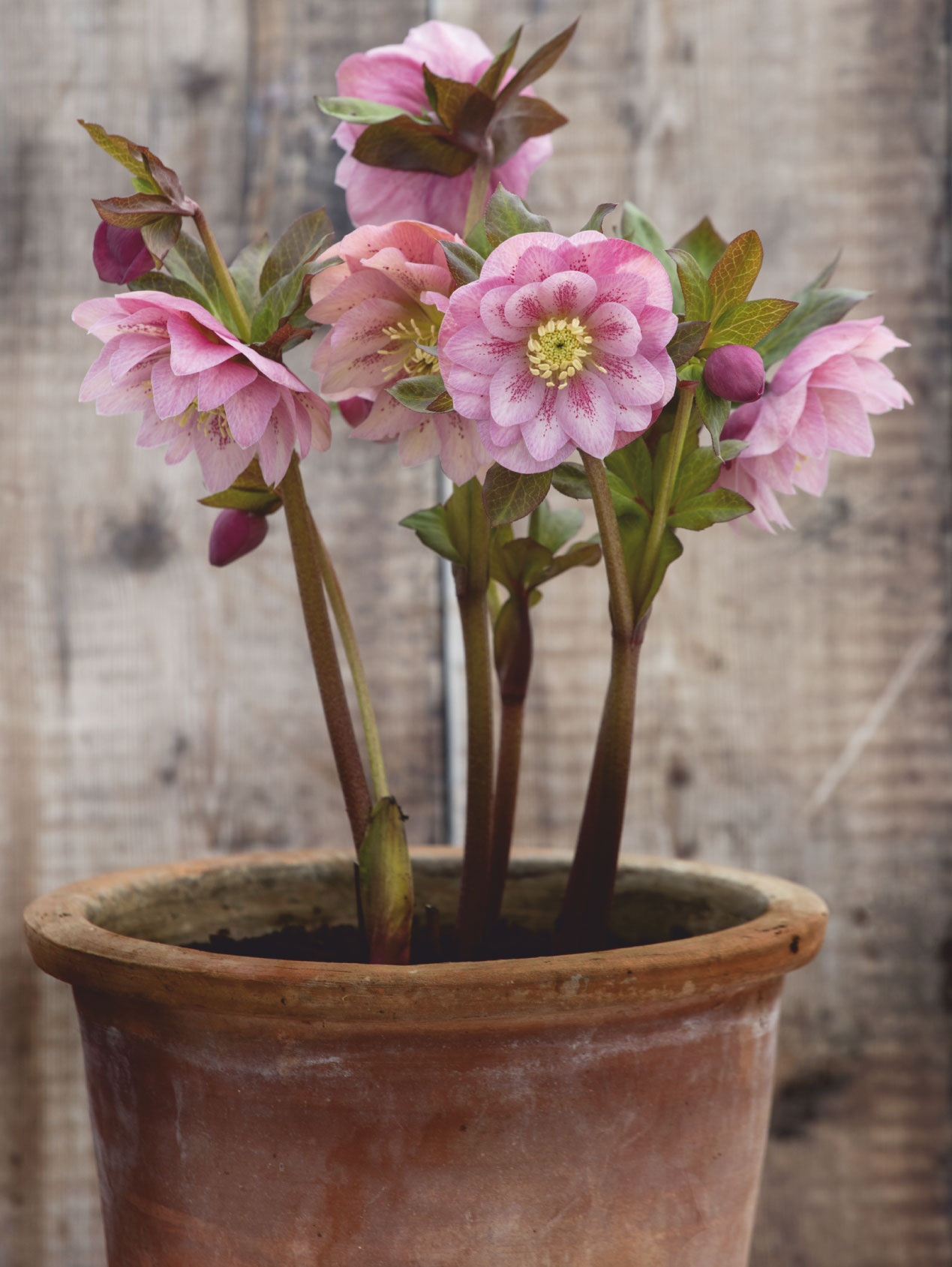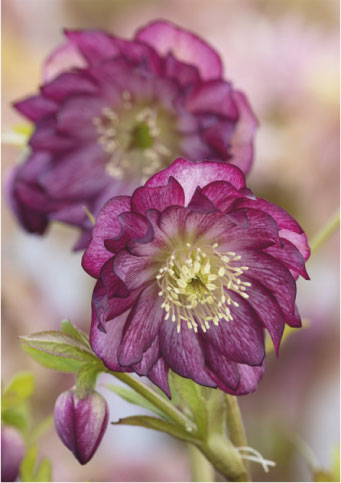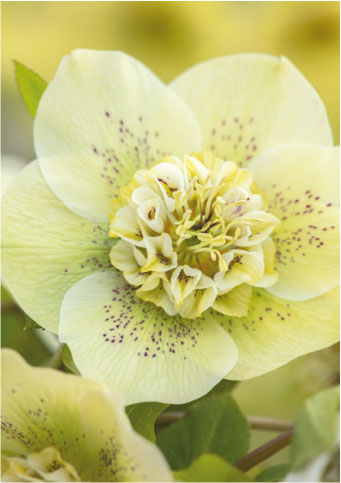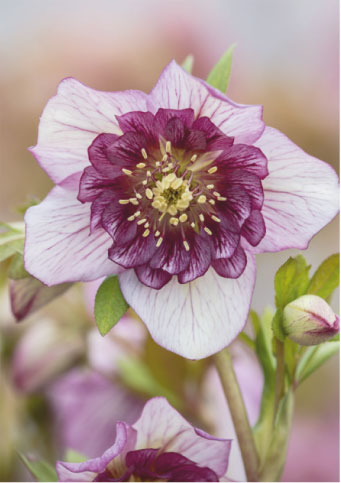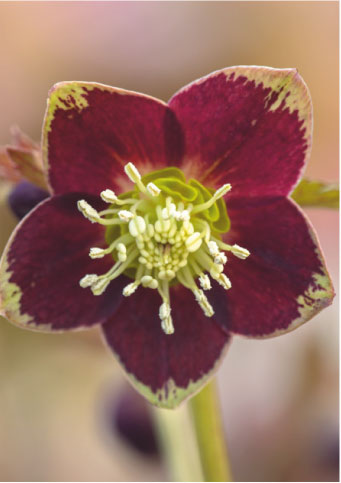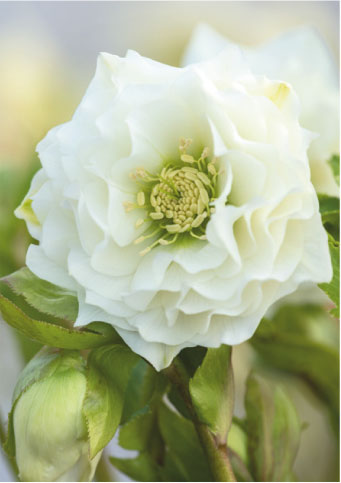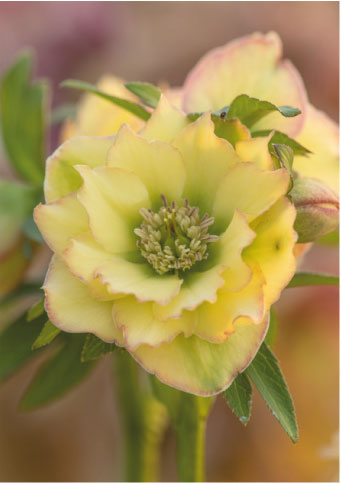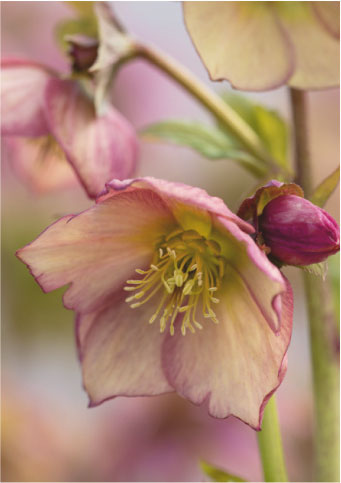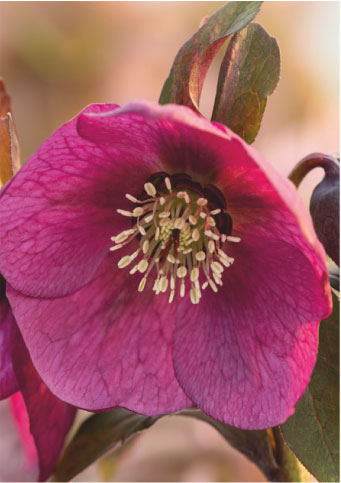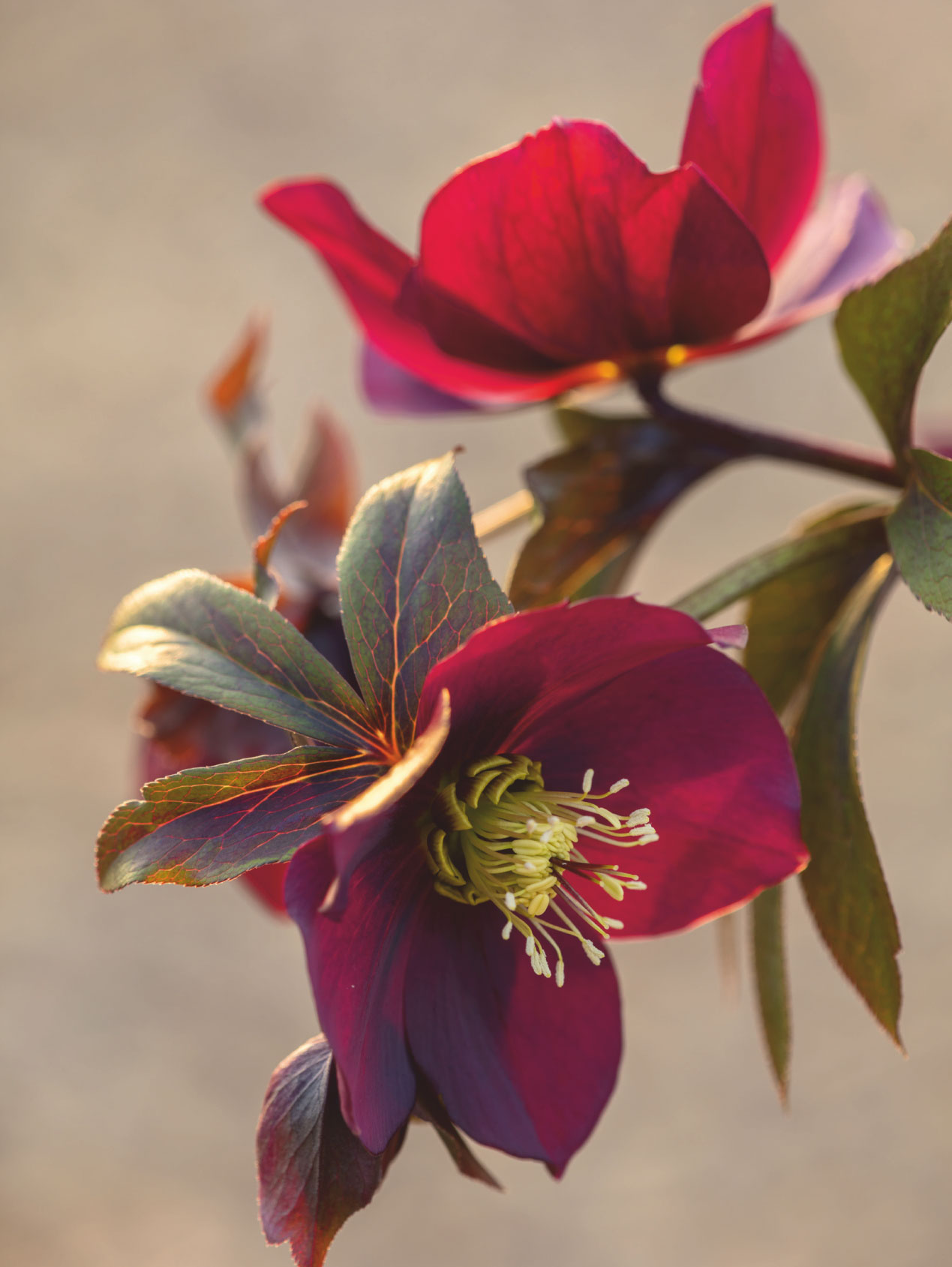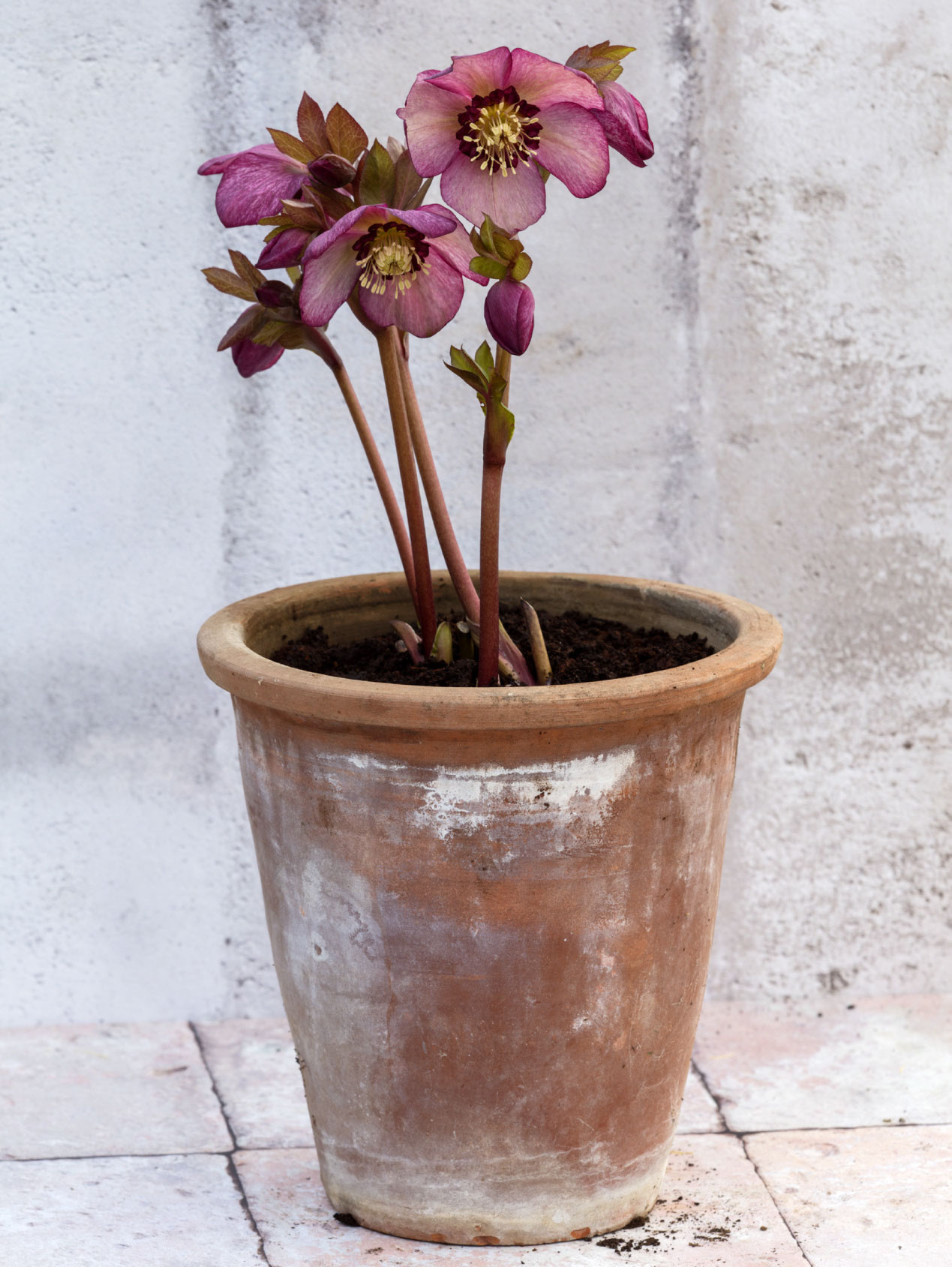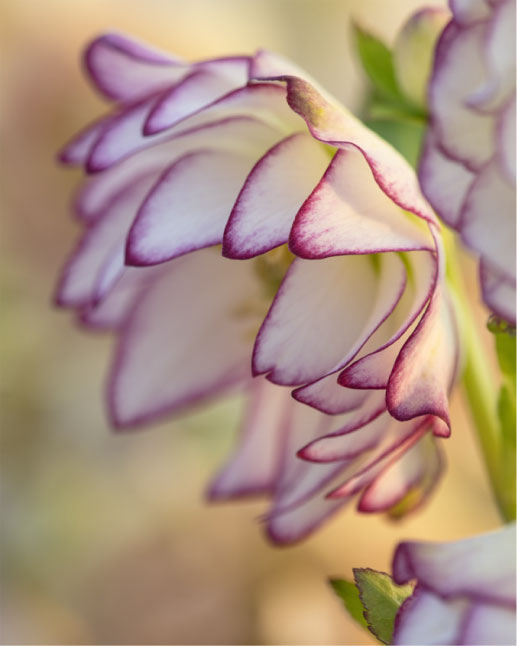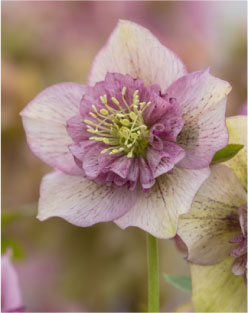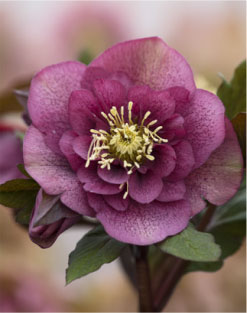Country Living - Heavenly hellebores
| Picotee double
|
Cream spotted anemone
|
Picotee semi-double
|
| Small-flowered picotee
|
There is a variety and colour of hellebore hybrid to suit every situation | White double
|
| Yellow double
|
Apricot single
|
Pink-red single
|
Words by Stephanie Donaldson. Photography by Clive Nichols.
March 2019
A love for the Lenten rose has led to a new-found career for one woman, resulting in elegant flowers that are stars of the show in spring.
In the dark days of winter when garden flowers are scarce and generally modest in appearance, hellebores (Helleborus x hybridus) emerge to delight the eye and lift the spirits. Seemingly unperturbed by anything the weather may throw at them, their flowers unfurl from among the deeply divided evergreen leaves, in shades that range from purest white, through yellows, pinks and reds, to smoky black. Hellebores are flowers of infinite variety, encompassing single colours, bi-colours, spotted, freckled and picotees with petals edged and veined in a contrasting colour. There is variation in their forms, too – single, semi-double, fully double and the anemone-flowered hybrid that features a ruff-like central boss. Once you awaken to the charms of the hellebore, they are hard to resist and choosing which ones to grow becomes a pleasurable dilemma. Before you know it, you will have started a collection – and your winters will be brighter for it.
Lorna Jones of Hertfordshire Hellebores certainly started small. “My sister gave me my first plant – a native stinking hellebore (Helleborus foetidus) – that was not in flower, so it must have been the shape of the leaf that attracted me,” she says. “It was later on that I came across the hybrids with their wonderful colours and shapes, but I didn’t make a conscious decision to start growing and selling them – I just fell into it.”
In the early days, it was very much a case of trial and error but – encouraged by some early successes – the number of plants Lorna potted up each year gradually increased. Over time she has developed more than 60 different breeding lines within a collection of several thousand individual plants, each line with their own unique characteristics. “It has taken me decades of work to reach the point where I am today,” she says. “This has been achieved through ‘line breeding’ where similar plants are cross-pollinated over a number of generations to produce increasingly consistent results. Individual strains now yield reliable results, but only if hand-pollination is used.”
Lorna explains that with garden-grown, insect-pollinated hellebores, results will always be unpredictable. This can be one of their joys, as they will all be slightly different, but can also be a source of potential disappointment. Double flowers only produce similar offspring if both parents are double, and some colours – such as pink, red or white – will dominate, but she thinks it is worth allowing some seedlings to develop, if space permits. The biggest advantage of purchasing a hybrid hellebore in bloom is that it is possible to see just what the plant will look like. And it’s not just the flower shape, colour and form that should be considered. The apparent vigour and health of individual plants, the way the flowers are held and the angle of the stem (some grow at an awkward 45 degrees) are also factors. One of Lorna’s aims has been to develop plants with blooms that face outwards rather than down.
There is a variety and colour of hellebore hybrid to suit every situation. The whites and yellows are the most visible when planted in shade; large, bi-coloured doubles create an extravagant show; while doubles derived from H. torquatus are ideal for windy, exposed positions as they tend to be short, and the greens help to blend and unite a mixture of brighter colours.
| Picotee double
|
Cream spotted anemone
|
Picotee semi-double
|
| Small-flowered picotee
|
There is a variety and colour of hellebore hybrid to suit every situation | White double
|
| Yellow double
|
Apricot single
|
Pink-red single
|
Tie a length of wool round the stem to mark the pollinated flower. Harvest the seed in May and sow fresh in pots of gritty soil-based compost. Stand the pots outdoors in dappled shade, protected from birds and mice with wire netting. The seedlings will germinate in winter and should be potted on until they reach flowering size, in about three years.
For Lorna, the most exciting moment of the year is when she walks down the rows of new flowering plants. “Most are nice enough,” she says, “but my real hope is for an exceptional specimen that is better than any of the existing plants in my collection. The search for perfection is never-ending – there is always something that could be improved upon.”
- Hellebores prefer deep soil, high in humus, moist but not waterlogged; they also do very well in clay. Improve light soils with garden compost and leaf mould
- They do best in a cool, semi-shaded position provided by a house or garden wall, or when shaded by shrubs and small trees
- Hellebores survive on surprisingly little feed, but given the chance they will benefit from a good feed. Apply pelleted plant food annually and mulch with leaf mould
- Lorna removes all the old foliage around Christmas – the leaves can look tatty beyond a certain point and any black spot may be passed on to new foliage, but you can leave a few healthy leaves to frame the flowers
- Mature hellebore plants have extensive leaf canopies that can obscure companion snowdrops, cyclamen and wood anemones – they will gain from the removal of some of this foliage at flowering time
- Lorna does not recommend dividing hellebores – they are slow-growing and rarely get too big; it’s better to buy new plants or grow some from seed
IN POTS
- Hellebores develop an extensive root system, and require a large pot to allow for growth and space for companion planting, eg ivys, grasses or spring bulbs
- Plant in a gritty soil-based compost and mulch with gravel
- Move pots into prime position close to the house when they are in flower
- Do not neglect them once they have finished flowering. If you tuck them away, remember that they will need regular water and liquid feed through the summer if they are to continue to thrive
- Stand potted hellebores in dappled shade when they’re not on display
- Hellebores prefer deep soil, high in humus, moist but not waterlogged; they also do very well in clay. Improve light soils with garden compost and leaf mould
- They do best in a cool, semi-shaded position provided by a house or garden wall, or when shaded by shrubs and small trees
- Hellebores survive on surprisingly little feed, but given the chance they will benefit from a good feed. Apply pelleted plant food annually and mulch with leaf mould
- Lorna removes all the old foliage around Christmas – the leaves can look tatty beyond a certain point and any black spot may be passed on to new foliage, but you can leave a few healthy leaves to frame the flowers
- Mature hellebore plants have extensive leaf canopies that can obscure companion snowdrops, cyclamen and wood anemones – they will gain from the removal of some of this foliage at flowering time
- Lorna does not recommend dividing hellebores – they are slow-growing and rarely get too big; it’s better to buy new plants or grow some from seed
IN POTS
- Hellebores develop an extensive root system, and require a large pot to allow for growth and space for companion planting, eg ivys, grasses or spring bulbs
- Plant in a gritty soil-based compost and mulch with gravel
- Move pots into prime position close to the house when they are in flower
- Do not neglect them once they have finished flowering. If you tuck them away, remember that they will need regular water and liquid feed through the summer if they are to continue to thrive
- Stand potted hellebores in dappled shade when they’re not on display
